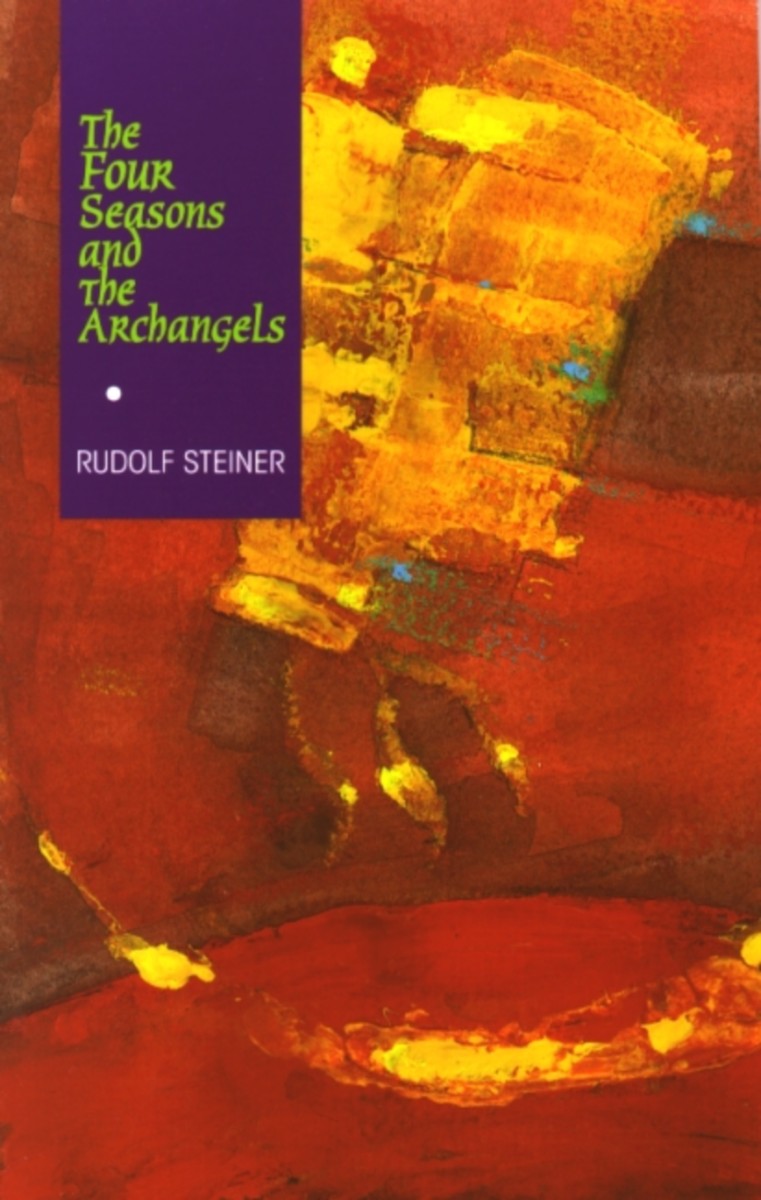The Four Seasons and the Archangels
Experience of the Course of the Year in Four Cosmic Imaginations (CW 229)
- Publisher
Rudolf Steiner Press - Published
1st August 1996 - ISBN 9781855840508
- Language English
- Pages 88 pp.
5 lectures, Dornach, Switzerland, October 5–13, 1923 (CW 229)
These five profound lectures look at the cosmic forces behind the four great festivals of the year, providing a wealth of material for fruitful thought and meditation. Steiner presents great imaginative pictures that unite the heavens and the Earth through a portrayal of the activities of the archangels Michael, Gabriel, Raphael, and Uriel.
In the course of the lectures, Rudolf Steiner offers spiritual insight into subjects that include the alchemical processes of sulfur, mercury, and salt in the cosmos; the realms of humankind and plants; spiritual “combustion” processes; crystals; clouds and meteors; the movements of elemental beings in nature; and the conflicting efforts of Lucifer and Ahriman—the two great adversaries—to divert Earth from its true purpose.
The Four Seasons and the Archangels includes five color plates of Rudolf Steiner’s blackboard drawings made during the lectures.
This volume is a translation from German of Das Miterleben des Jahreslaufes in vier kosmischen Imaginationen (GA 229).
C O N T E N T S:
Foreword
1. The Michael Imagination
2. The Christmas Imagination
3. The Easter Imagination
4. The St. John Imagination
5. The Working Together of the Four Archangels
Rudolf Steiner
Rudolf Steiner (b. Rudolf Joseph Lorenz Steiner, 1861–1925) was born in the small village of Kraljevec, Austro-Hungarian Empire (now in Croatia), where he grew up. As a young man, he lived in Weimar and Berlin, where he became a well-published scientific, literary, and philosophical scholar, known especially for his work with Goethe’s scientific writings. Steiner termed his spiritual philosophy anthroposophy, meaning “wisdom of the human being.” As an exceptionally developed seer, he based his work on direct knowledge and perception of spiritual dimensions. He initiated a modern, universal “spiritual science” that is accessible to anyone willing to exercise clear and unbiased thinking. From his spiritual investigations, Steiner provided suggestions for the renewal of numerous activities, including education (general and for special needs), agriculture, medicine, economics, architecture, science, philosophy, Christianity, and the arts. There are currently thousands of schools, clinics, farms, and initiatives in other fields that involve practical work based on the principles Steiner developed. His many published works feature his research into the spiritual nature of human beings, the evolution of the world and humanity, and methods for personal development. He wrote some thirty books and delivered more than six thousand lectures throughout much of Europe. In 1924, Steiner founded the General Anthroposophical Society, which today has branches around the world.


